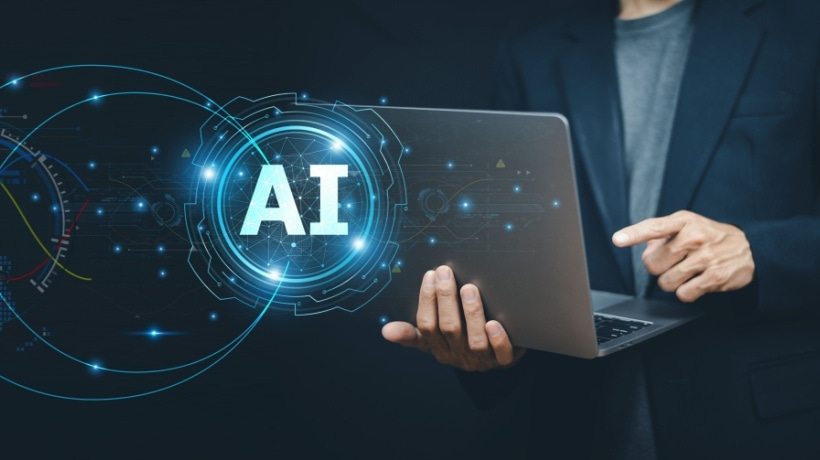Personalized, Scalable, And Smarter Upskilling
The corporate Learning and Development (L&D) landscape is in the midst of a radical transformation. Gone are the days when upskilling employees meant static courses, rigid training schedules, and one-size-fits-all content delivered once a year in a conference room. Today, employees expect—and deserve—learning experiences that are personalized, immediate, and deeply relevant to their roles.
Amid shifting business priorities, technological advancements, and a rapidly evolving workforce, Artificial Intelligence (AI)-powered automation has emerged as a powerful ally for L&D leaders. By blending Artificial Intelligence with automation tools, organizations can create dynamic, scalable, and efficient learning ecosystems that foster smarter upskilling. In this article, we'll explore why AI-powered automation is reshaping L&D, how it supports smarter upskilling, and why low-code/no-code (LC/NC) approaches are making this transformation more accessible than ever before.
The New Learning Imperative
The demand for continuous learning is higher than ever. Technological disruption, economic uncertainty, and the shift toward hybrid and remote work have pushed organizations to reconsider how they approach employee growth and development. Employees are not only expected to master technical skills but also adapt to new ways of working, develop digital fluency, and embrace change as a constant. Traditional L&D methods simply can't keep up with this pace. They are often too slow, resource-heavy, and disconnected from real business needs.
Organizations that fail to evolve risk falling behind, both in terms of performance and talent retention. In contrast, forward-looking companies are prioritizing learning agility, empowering employees to acquire new skills proactively and aligning individual growth with organizational goals. This is where AI-powered automation steps in as a game changer.
What Is AI-Powered Automation In L&D?
AI-powered automation refers to the use of Artificial Intelligence to streamline, enhance, and personalize L&D processes. Rather than simply digitizing old training methods, this approach reimagines learning experiences from the ground up.
Imagine an AI system that analyzes an employee's performance data, recommends tailored learning paths, delivers bite-sized content precisely when it's needed, and even adjusts training in real time based on progress. That's not a futuristic fantasy; it's the new reality being embraced by leading organizations today. Key components of AI-powered automation in L&D include:
- Personalized learning paths
AI can analyze skills gaps and design individualized learning journeys. - Intelligent content curation
Automated systems can select and recommend content that matches employees' roles, goals, and learning styles. - Real-time feedback and assessments:
AI-driven analytics provide instant insights into learner progress, helping managers intervene or adjust as needed. - Automated administrative tasks
Scheduling, enrollment, reminders, and reporting can all be handled by AI, freeing L&D teams to focus on strategy and design.
Why Smarter Upskilling Matters
Smarter upskilling goes beyond simply offering more courses. It's about creating a learning culture where employees are continuously developing the right skills to meet future demands. A smarter approach ensures that:
- Learning is continuous and embedded into daily work.
- Employees feel ownership of their growth.
- Organizations can quickly pivot to new priorities.
- The skills gap is proactively closed, rather than reacted to.
According to a recent LinkedIn Learning report, 89% of L&D professionals agree that proactively building employee skills will help navigate the future of work. But with an expanding universe of skills and shrinking timelines, traditional approaches alone can't deliver. AI-powered automation enables organizations to achieve this smarter upskilling at scale and speed.
Personalization At Scale: AI's Superpower
One of the biggest challenges for L&D is creating personalized learning experiences at scale. While most organizations understand the importance of tailoring content to individual needs, doing so manually is labor-intensive and often impractical. AI solves this dilemma beautifully. By analyzing a wide range of data—from employee performance metrics to behavioral patterns in learning platforms—AI can craft bespoke learning journeys for each employee.
For example, imagine a sales team where each member has different strengths and weaknesses. AI systems can automatically assign advanced negotiation modules to some, while others might receive microlearning on product updates or customer empathy training. This personalization increases engagement, improves knowledge retention, and accelerates skill acquisition. When employees see that learning is relevant to their actual challenges and career aspirations, they are far more likely to embrace it.
Automating Content Creation And Curation
Content creation has long been a bottleneck in L&D. Developing custom training materials can be expensive, time-consuming, and often requires specialized expertise. AI is changing this game. With generative AI models, organizations can create learning materials—such as presentations, assessments, videos, and simulations—quickly and at a fraction of the traditional cost.
Additionally, AI can curate existing content from internal knowledge bases or external sources, ensuring learners always have access to the most current and relevant information. This dynamic curation allows organizations to keep pace with industry shifts and evolving internal strategies.
Data-Driven Decisions And Predictive Insights
AI-powered automation equips L&D leaders with a wealth of actionable data. Instead of relying on end-of-course surveys or infrequent performance reviews, L&D teams can now monitor learner engagement, knowledge retention, and skills application in real time.
Even more powerful is predictive analytics. AI can forecast future skills gaps by analyzing trends in business strategy, market dynamics, and workforce data. Imagine being able to prepare your workforce for emerging technologies or shifting customer demands before they become critical. This level of foresight positions L&D not just as a support function but as a strategic partner driving organizational resilience and innovation.
Boosting Efficiency Through Workflow Automation
Beyond learning content and analytics, AI-powered automation streamlines the entire L&D workflow. Tasks such as:
- Assigning courses based on roles or compliance requirements
- Sending personalized reminders and nudges
- Tracking certifications and renewals
- Generating executive-level dashboards and reports
These can all be automated, dramatically reducing the administrative burden on L&D teams. This efficiency frees up L&D professionals to focus on higher-value activities such as curriculum design, learner experience optimization, and aligning programs with business objectives.
How Low-Code/No-Code Makes AI-Powered L&D Accessible
While AI-powered automation offers immense benefits, integrating and customizing such systems has traditionally required significant technical expertise. This is where low-code/no-code platforms enter the scene. LC/NC technology empowers nontechnical L&D professionals to build, modify, and deploy learning applications and workflows without relying on extensive IT support. With visual interfaces and prebuilt modules, L&D teams can:
- Quickly design automated workflows (e.g., onboarding paths, compliance updates)
- Customize dashboards and reporting tools.
- Integrate various data sources to deliver cohesive learning experiences.
- Experiment with new ideas and iterate rapidly.
By lowering the technical barrier, LC/NC democratizes the adoption of AI-powered automation in L&D. Organizations no longer need to wait for lengthy development cycles or compete for scarce technical resources. Instead, L&D leaders can be proactive architects of their own learning ecosystems, responding swiftly to business needs and learner feedback.
The Employee Experience Advantage
AI-powered automation doesn't just benefit the organization; it transforms the employee experience. When employees receive relevant content exactly when they need it, they feel more supported and empowered. AI-driven personalization ensures that learning never feels generic or disconnected. Instead, it becomes an integrated, seamless part of their workday.
Moreover, automated systems can create a sense of progress and achievement. Micro-credentials, gamified elements, and instant feedback loops keep employees motivated and engaged. As employees experience tangible growth and recognition, they become more loyal and invested in the organization's success. This virtuous cycle strengthens retention and builds a culture of continuous improvement.
Real-World Applications: Industries Leading The Way
Several industries are already reaping the benefits of AI-powered L&D automation:
- Healthcare
Continuous training on new protocols and technologies, automated compliance tracking, and real-time skills assessments improve patient outcomes and staff safety. - Financial services
Personalized upskilling on new regulations, AI-assisted risk management, and adaptive fraud detection training. - Manufacturing
Hands-on simulations powered by AI, predictive maintenance training, and automated safety compliance programs. - Technology
Hyper-personalized technical training, AI-generated code review lessons, and adaptive learning labs for emerging tools.
These real-world successes demonstrate the transformative potential of AI-powered L&D strategies supported by automation and LC/NC customization.
Governance And Ethical Considerations
As with any powerful technology, AI-powered automation in L&D must be implemented thoughtfully. Key considerations include:
- Data privacy
Organizations must handle learner data responsibly, ensuring transparency and compliance with regulations such as GDPR. - Bias mitigation
AI systems can inadvertently reinforce existing biases if not carefully designed and monitored. L&D teams need to ensure content and recommendations are equitable and inclusive. - Human oversight
While AI can enhance decision-making, human judgment remains crucial. Trainers, managers, and L&D leaders play a key role in interpreting insights and maintaining the human touch in learning.
Organizations should establish governance frameworks and continuous monitoring to maximize benefits while minimizing risks.
Preparing For The Future: L&D As A Strategic Growth Engine
As AI-powered automation becomes more sophisticated, the role of L&D will evolve dramatically. No longer seen as a support function, L&D will emerge as a strategic growth engine, directly tied to business performance and innovation. Key steps to prepare include:
- Invest in AI and LC/NC capabilities
Empower your L&D teams with the tools they need to design and deploy intelligent learning experiences. - Cultivate a culture of continuous learning
Encourage curiosity, experimentation, and self-directed growth throughout the organization. - Align learning with business strategy
Ensure that upskilling initiatives support organizational goals and future workforce needs. - Prioritize data literacy
- Equip L&D leaders and stakeholders with the skills to interpret and act on AI-driven insights.
Conclusion: A New Era Of Learning
The convergence of AI-powered automation and low-code/no-code innovation is opening a new era for L&D. Organizations that embrace this transformation can deliver highly personalized, efficient, and impactful upskilling experiences. Employees, in turn, gain the confidence and capabilities to navigate complex challenges and seize new opportunities.
Rather than being overwhelmed by the pace of change, organizations can harness it to build more adaptive, resilient, and future-ready workforces. As we look ahead, one thing is clear: the future of L&D is intelligent, automated, and deeply human at its core. AI-powered automation isn't just a technological upgrade; it's an invitation to reimagine learning as a living, evolving force that empowers people and propels organizations forward.








